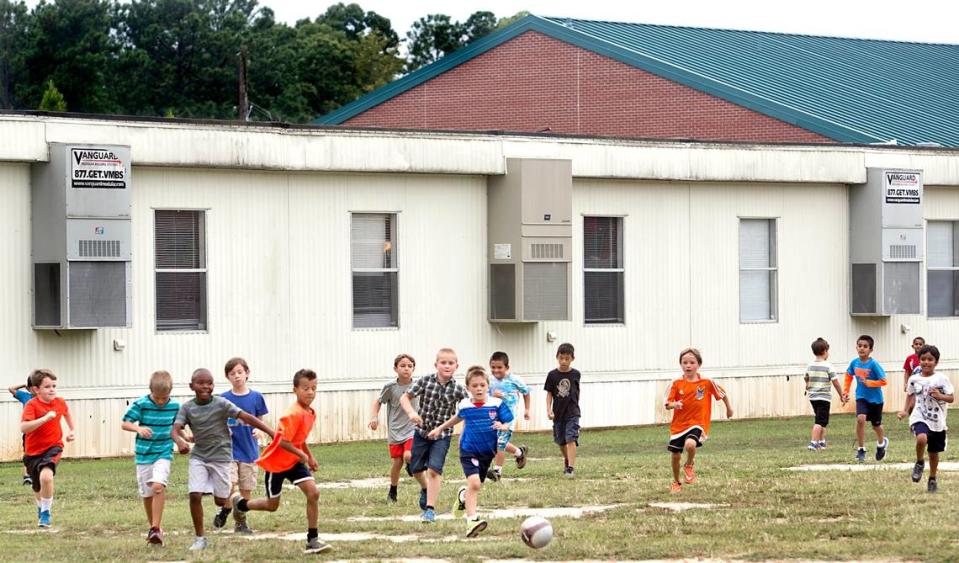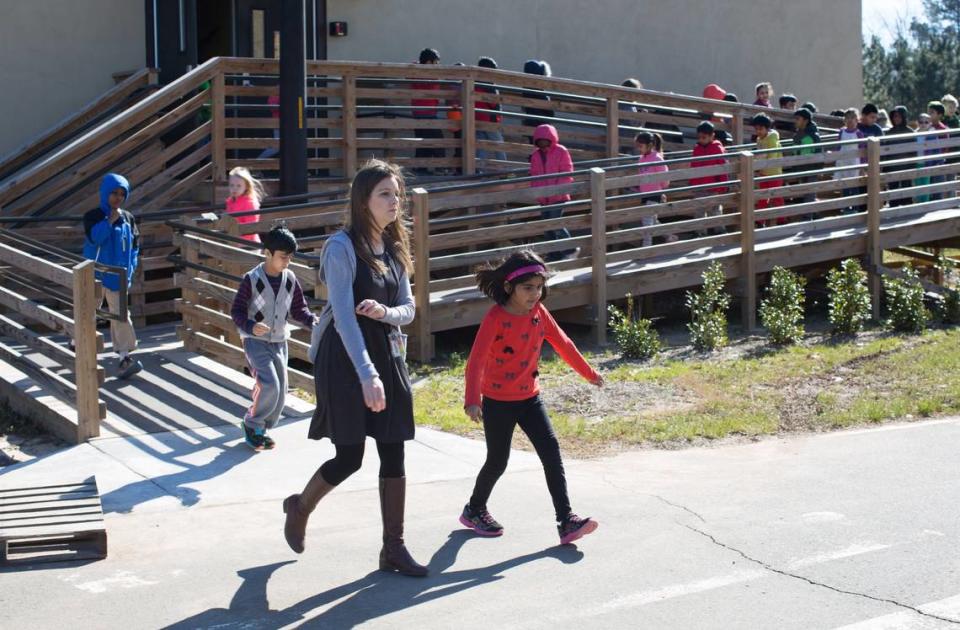Wake schools want to cut use of campus trailers by half. Here’s the plan to do that.
Wake County is hoping to eventually make “trailer-villes” on school campuses a thing of the past.
Trailers have been an unwelcome but major part of school life for tens of thousands of Wake County students for more than 30 years. But school administrators said Tuesday their goal is to reduce the number of trailers on campuses by 50% over the next 25 years.
“Over the next 25 years we think we can make a significant dent in the capacity of the trailers that we just don’t need,” said Glenn Carrozza, assistant superintendent for school choice, planning and assignment.
Wake’s more than 600 classroom trailers hold 19,000 of the district’s 160,000 students.
Trailers needed because of growth
Wake has used trailers, also called modular classrooms or mobile units, for decades to deal with overcrowding.
Since 1991, Wake has grown by more than 94,000 students. Some schools still have more than 20 trailers on their campuses.
More than 60% of Wake’s classroom trailers are used in elementary schools. This is due in large part to how Wake lost 9,000 seats when the state began cutting class sizes in kindergarten through third grade in 2017.

“We as a school system do not have control over the growth that comes in our particular area so we must be reactive to that,” Carrozza told the school board’s facilities committee on Tuesday. “We’ll continue to do that, and trailers have been a huge part of dealing with that growth.”
Wake’s student enrollment is now below pre-pandemic levels, but crowding is still a concern in parts of the county. Several new schools and renovation projects that expanded the size of existing schools have cut down on trailer usage.
Mobile unit costs rising
Trailers can be expensive to maintain and relocate.
Renovating six classroom trailers can cost $1 million. Adding or removing those six class trailers to a campus costs $1.8 million. That cost was $374,250 a decade ago.
In addition to the cost, school board member Sam Hershey said trailers can disrupt the learning process. He pointed to how students have to leave trailers to go into the main building during weather emergencies such as tornadoes. They also often have to leave the trailers to use the restroom.
“I hope we do everything in our power in our future builds to try to avoid having trailers, because there are a number of items like that are disruptive to learning unnecessarily,” said Hershey, who chairs the facilities committee.
But Carrozza said trailers are still a “cost-effective” measure to deal with overcrowding. He said that removing all the trailers right now would lead to tens of thousands of students being reassigned.
“That is not something that we’ve considered doing due to the disruption it would cause families,” Carrozza told the committee.

The plan to remove trailers
But Wake does have a long-term plan to reduce as many trailers as possible.
Over a five-year period running from 2022 to 2027, Wake expects to remove 69 trailers ranging from single classroom units to those that contain four to eight classrooms.
“If we can continue at that pace, we think we can reduce the number of trailers on our campuses by 50%,” Carrozza said.
Wake plans to prioritize removal of trailers on campuses as they complete major renovations that increase the number of students that can be held in the main building.
But Carrozza and Hershey said the goal is built on the expectation that voters will continue to support bond referendums that will pay for new schools and renovations.
“If we had all the money in the world we would make some changes faster,” Hershey said. “But funding is a real issue when you have a school district of this size.”

